The types of stone paving available are exhaustive, however two of the most popular are sandstone and limestone paving. Today we are going to take a look at both in a comparable state to help you decide which is the most preferable stone for yourself.
Sandstone is available in multiple colours, from light buff through to beige, silver grey and shades of dark brown and black. Within each shade group you then have complementary tones and bands of colour which appear subtle when dry and then become much more vibrant when wet. Lighter shades of sandstone are ever so slightly more porous than the darker colours and tend to need additional cleaning or a sealant applying. Sandstone has a rippled and uneven surface and hand-cut edges and can either be a hand-cut thickness or calibrated to an even thickness which will help you when laying the paving. There are other effects and finishes when it comes to sandstone, for example antique/tumbled sandstone has been finished with a time-worn effect with a slightly flatter surface and rounded edges to give the appearance that these stones have been walked over for hundreds of years. Antique/tumbled sandstone is often available in more muted shades, making the property more suited to older style properties and period homes. Sandstone with a sawn finish has a very different appearance, making it a more contemporary option, with its sawn straight edges which enable close jointing which complements the contemporary theme. You will find that sawn sandstone usually has either a honed surface making it super smooth to touch or a sandblasted texture, giving it a gritty feel.
Limestone paving is rather similar in appearance to sandstone, but tends to have a flatter surface with less riven edges and more of an orange-peel texture to it. The colours available in limestone also tend to be more limited than sandstone with three main colour choices of buff-grey, blue-grey and blue-black. With natural stone, there will always be some variation in colour, however limestone gives off a lot less colour banding and variation of shade than sandstone. One of the great advantages of limestone paving is that it may be placed in numerous areas, such as driveways, patios, walkways, pathways, courtyards, verandas and stepping stones. The versatility of limestone pavers means that they can be applied just about anywhere around your home, both externally and internally. Because limestone is relatively soft compared to other stones, it can therefore be cut much easily to fit in with your intended project.
When using natural stone paving, you will never get two natural stones with the same colouring, patterns and tones, making it completely unique to your property. It is also formed to be able to handle various weather conditions, ensuring it maintains its appearance for centuries, with minimal wear and tear. With regards to caring for your natural stone paving, you will find maintenance a doddle – it is extremely easy to clean and naturally has smaller joints than concrete paving, which even reduces the amount of weeds growing in-between any cracks. Due to natural stone’s durability, you will also find that you won’t have to constantly replace and repair sections of paving as no significant damage should ever occur. It doesn’t have to cost the earth to use natural stone paving, and you will find that in the long run it actually saves you money as you won’t be having to repair or replace the stone.
Colours and shades available in natural stone paving are Raj Green, Carbon, Kota Black, Umbra, Multi Buff, Shadow Grey, Tallow Fossil, Modak, Two Tone, Mint, Lalitpur Yellow, Kotach Blue and Yellow Limestone, giving you endless possibilities to create your dream paving area.
As it is a natural product, you may eventually find that algae may build up over the years, particularly on a north facing patio with little sunlight. However, this can be prevented by using a sealant such as the Thompson’s Satin or Wet Look Finish Patio & Block Paving Seal, an advanced acrylic formula protection for paving and driveways, which seals and protects from moss and algae growth, whilst leaving a lovely satin or wet look finish. Paving Seal enhances the appearance of your paving, protects against oil or fuel spills, moss and algae growth and damages from weather and wear and tear, so it is definitely worth considering this option with your paving, however it is not recommended for use with Carbon Indian Stone.
When laying your paving, we recommend using the Nexus ProJoint Fusion All Weather Paving Joint Compound in either Buff, Mid Gray, Basalt or Black, which is a quick and easy solution for filling joints between paving slabs and setts, suitable for natural stone and concrete paving. It provides you with a weed-free, frost-resistant joint without staining the paving, saving you both time and money.
eDecks offers some of the best deals on Indian Stone Paving around, including all of the installation supplies and tools you may need. Not only do we provide plenty of unbeatable deals but also:
Super-fast FREE delivery on orders over £100*
48 Hour Delivery on many products
Handy FREE installation guides and instructional videos
*Free delivery applies to most of the UK, but some areas may incur a charge. Please check the eDecks website for more details.


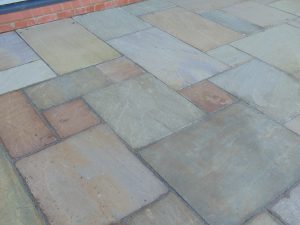
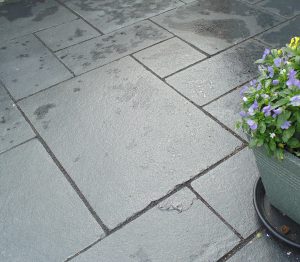
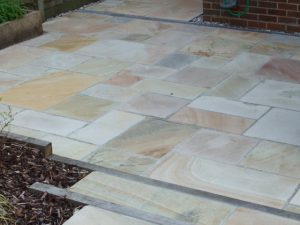
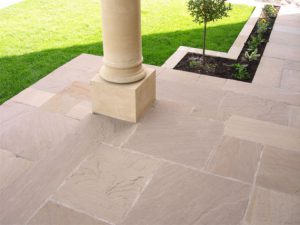
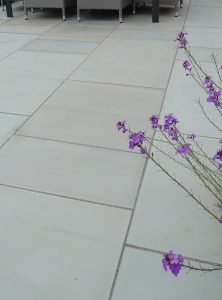
Yeah, this is much effective article. Which Indian Stone Paving Material is Best between limestone vs sandstone. I prefer to use limestone myself.
Thanks for helping us. Such a wonderful blog about limestone vs sandstone. If you wanna grab details on gwalior mint wall panels stone, fossil mint natural stone, lalitpur yellow sandstone, gwalior mint stone elevation, sagar black sandstone, or any other. You can visit Stone India.
Great blog Post !! This is a very informational blog post for the people, who are looking for Sandstones of our residential and commercial places. To know more about natural Stones, visit us – https://www.stoneindia.co